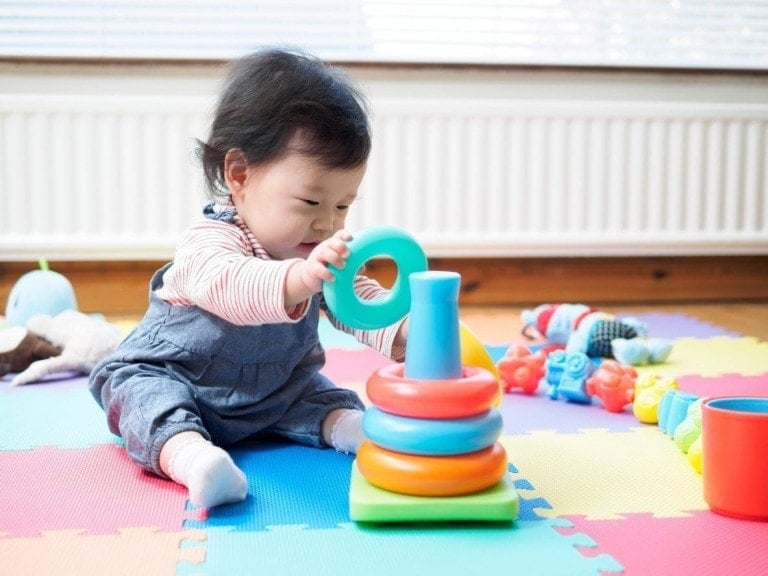A commonly asked question of new parents is, “How do I soothe a fussy baby?” Let’s take a closer look at the problem. Why is the baby fussing in the first place? I have written another article on interpreting your baby’s cry, but it is important to rule out several contributing factors.
First, check all of the basics: is her diaper dry? Is she in pain? Uncomfortable? Is her temperature too hot or cold? Hungry? Think about this last one. It can be hard to know if your baby is hungry. You may think she can’t possibly be hungry because she just ate, but if you are breastfeeding, maybe she didn’t get as much as usual, or perhaps she is having a growth spurt and needs more calories. We can delve deeper once you have ruled out all of these possibilities.
Strategies to Soothe a Fussy Baby
1. Baby Massage
It can be uncomfortable when babies have gas or need to move their bowels. It is not necessarily painful, but it is a new sensation because babies don’t move their bowels in utero, and anything you can do to help move things along quicker will be beneficial. Infant massage has several strokes to the abdominal area that help move the bowls. Infant massage has many benefits, including calming the baby, regulating sleep/wake cycles, and helping babies get deeper/more restful sleep.
2. Swaddle
A good swaddle’s neutral warmth and pressure calm babies because they mimic the containment they felt in the womb.
3. Rock the Baby
The gentle movement calms babies because it mimics the womb and helps them feel calm and relaxed. However, don’t be afraid to really swing baby from side to side. Some babies prefer bigger movements.
4. Shush the Baby
Bring the baby’s ear close to your face and make a shushing noise in her ear. It is very loud in utero. Baby hears the swishing of the amniotic fluid, mom’s heartbeat, and their heartbeat, so by recreating that swishing sound, you are creating a calm environment for your baby.
5. White Noise
For the same reason babies are calmed by the shushing noise, babies like white noise, which is very calming for your babies. You can buy noise machines or use white noise apps on your smartphone.
6. Sing to Your Baby
The sound of your voice calms your baby because it is familiar to him. Talking and singing to him is reassuring and calming.
7. Rhythmic Patting
Babies are calmed by repetition. By patting your baby rhythmically, you are helping them relax. Don’t be afraid to pat her hard enough that her whole body feels it. Anything your baby feels on her entire body is more calming than just feeling a sensation on only one part of her body. Think about the calming effect of a warm bath versus a trickle of water.
8. Music
Lullabies, nursery rhymes, and gentle music calm babies because it causes the baby to focus on the sound of the music instead of crying.
9. Read a Book
The sound of your voice soothes babies, so by reading to them or telling them a story, you help them calm down and focus on your voice.
10. Take Baby for a Ride in the Car
For most babies, riding in a car is calming and helps them relax and fall asleep. However, your baby may be fussy in their car seat and needs calming.
11. Sucking
Sucking on a pacifier, nipple, or finger (parent or baby’s) stimulates the release of a calming hormone.1 It is very relaxing for your baby, and that is why pacifiers are so popular!
Sometimes, babies need to fuss because it’s their only communication method. Sometimes, babies are overstimulated and need that release. Try to relax and let your baby cry sometimes if they need to. Usually, a combination of these strategies will work to calm a baby. But if nothing works to soothe your fussy baby, and their cry is elevating in pitch and begins to become inconsolable, such as with colic, you may want to contact your healthcare provider. For more on calming a fussy baby, check out this video here:



































